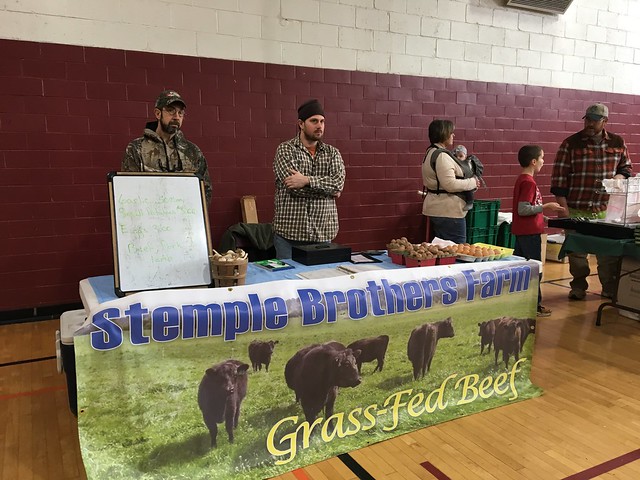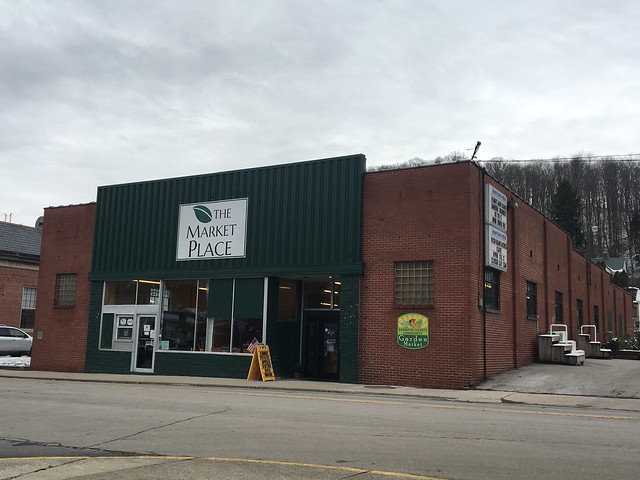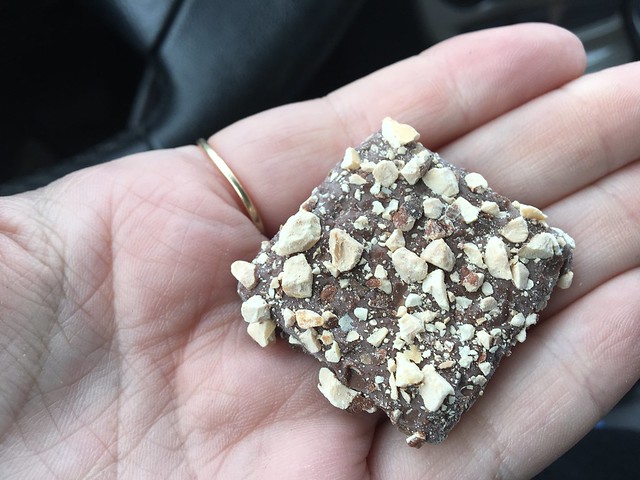Even during the coldest winter months, West Virginia farmers are still growing fresh produce to support the community.
The Winter Blues Farmers Market, organized by the West Virginia Department of Agriculture, took place Feb. 12 at the Charleston Civic Center as part of the 2017 Small Farm Conference. A sister event, the Winter Blues North Farmers Market, was held Feb. 9 in Morgantown. For the earlier event, more than 25 vendors gathered at the Ruby Community Center at Mylan Park to sell fruits, vegetables, meats, cheeses, eggs, breads, jellies, nuts, honey, woolen products and much more to the Morgantown community.
Many folks don’t realize they can get fresh, local food even throughout the winter. But, yes. Yes you can.
Farmers employ a variety of methods to make sure they’re putting food on your family’s table year-round — methods like using high tunnels, low tunnels, greenhouses and storage crops, according to Lisa Jones, program coordinator for the West Virginia University Extension Service Small Farm Center.
DeBerry Farm Fresh Produce, for example, sold potatoes, beets, garlic, winter squash and some pepper jelly at Winter Blues North. Storage crops, like potatoes, squash and apples, keep for long periods of time, as long as they are at optimal storage temperatures — around 55 degrees or so.
Those bright, leafy greens? Sickler Farms, which sold lettuce, kale, bok choy, collards, spinach, rainbow chard, mustard greens and arugula at the market, uses greenhouses and high tunnels — which protect crops from the snow and cold temperatures and extend the gardening season. Greenhouses work in a similar way but with the addition of environmental-control equipment.
“This was a great opportunity to highlight the amazing variety of products available in the winter months,” said Bryan Cheslock, president of the Morgantown Farmers’ Market Growers Association.
“Our farmers are a major economic driver, and this event not only boosts local business but supports our community with fresh, delicious goods.”
In the interest of full disclosure, I sit on the Morgantown Farmers Market Growers Association board, which hosted the event along with the WVU Extension Service Small Farm Center, because I care about its mission to provide the Morgantown area with fresh, local products.
The farmers are busy January through December so communities can eat healthily and channel money back into the local economy during the time when there is less activity.
So, if you think it’s difficult to support local farmers and food during the off-season, think again. Charleston’s Winter Blues Farmers Market and Morgantown’s Winter Blues North Farmers Market are just two of many markets that offer the opportunity to do so. The Bridgeport Farmers Market held a Valentine Market on Feb. 12 that featured local farmers, bakers and artisans who brought seasonal produce, farm-raised meats, fresh eggs, baked goods and other products.
Take some time to seek out opportunities to build those relationships with your local farmers, learning how your food is produced and maintaining those relationships — even throughout the chilly months of the year.
Eating fresh, local food is one way to fend off the winter blues.
For more information on how to find locally sourced food, reach out to your WVU Extension agent in your community or local farmers market.
Candace Nelson is a marketing and public relations professional living in Morgantown. In her free time, Nelson blogs about West Virginia food culture at CandaceLately.com.
Follow @Candace07 on Twitter or email Candace127@gmail.com.
Cheryl DeBerry’s Roasted Potatoes
DeBerry Farm Fresh Produce, a family-owned farm just over the state border in Maryland, provides produce to the Morgantown Farmers Market throughout the year. Cheryl DeBerry, and her husband, Charles, grow more than 50 types of vegetables, melons, herbs, gourds and berries. In winter, potatoes are in season.
This quick, simple recipe allows the fresh flavors of local potatoes to shine.
“Our go-to recipe right now during the winter months is roasted potatoes using our red potatoes and garlic; it is a great side dish that our whole family loves,” DeBerry said.
bacon
red potatoes
garlic cloves
Fry local bacon, reserving the grease for the recipe and using the bacon elsewhere. The DeBerry’s use Working H Meats’ bacon, which is a butcher and meat market in Friendsville, Maryland. If bacon grease isn’t your thing, you can use olive oil, vegetable oil or melted butter.
Heat oven to 400 degrees.
Wash, dry and chop local potatoes into 1/2-inch squares, cutting enough to fill up a parchment-lined baking sheet.
Mince a couple cloves of garlic (to taste).
Mix potatoes, garlic and enough bacon grease to coat.
Spread potatoes in a single layer on the baking sheet and sprinkle with sea salt if desired.
Bake for about 15 minutes, then turn the potatoes with a spatula and bake another 10 to 15 minutes under tender and browned.
I've been writing for the Charleston Gazette-Mail as a food columnist for a few months now, but I haven't had the chance to share some of the columns I've been writing! So, here's a look at the first column I wrote:
A spoon was once the symbol of intention to commit.
And I mean more than just committing your face to that piece of blackberry cobbler.
The legend goes: In the 1800s, when there weren’t shops on every corner, men had to craft their gifts by hand, and one common present was a spoon. A man would fashion the spoon out of available lumber, and he’d give his wooden spoon to a lady in hopes of courting her.
I don’t know about you, but a spoon would certainly win me over. And I’m talking present day. That blackberry cobbler (a la mode, please) isn’t going to eat itself.
The spoon, albeit tiny, is the basis of so many experiences, memories and cherished moments. From your first bite of baby food to those plastic spoon prizes you’d dig out of cereal boxes, to the best bowl of pho you’ve ever had. Yes, the spoon is, in fact, quite grand.
Just ask Stan and Sue Jennings of Allegheny Treenware, a working farm in Thornton. The Jennings, who create a variety of wooden utensils made from West Virginia hardwoods, consider themselves “spooners.”
Spooner (n.): A person who crafts spoons.
People all over the world have devoted their lives to this craft. These spooners may mold intricate, decorative spoons from porcelain or create ornate designs in metal, but many of the others gather inspiration from the humble Allegheny Treenware shop, 10 miles east of Grafton.
“We have a very traditional, Appalachian feel to our spoons,” Sue said. “They’re very cut and dry. They’re not artistic. But they work really well for what we do — and you can appreciate that. They hold up well, and you can use them over and over and over again. They are hard workers.”
Allegheny Treenware spoons stay true to their Appalachian roots. After the Civil War, when people began making spoons from pewter or other metal, it was the Appalachians who continued to use wood — partially to carry on the tradition and partially because of the cost.
“The poorest people have always been the Appalachian people, and we’ve used wooden utensils longer after everyone else. And we continue to produce that traditional, Appalachian spoon,” Sue said.
Now those traditional, Appalachian spoons are inspiring others. Sue and Stan have met several other spooners within the state and along the East Coast, people who took up the trade after seeing the success at Allegheny Treenware, with their own added twist or contemporary feel.
“Every successful spoon maker inspires people, and it’s great that we’ve inspired several people to pursue this craft. That’s just what we want,” she said.
See? Spoons change lives, people.
But the biggest change that the simple West Virginia spoon has seen is on the small screen.
Damaris Phillips, of the Food Network show “Southern at Heart with Damaris Phillips,” began using Allegheny Treenware’s 9-inch long-handled measuring spoons on her show a few years ago, and, suddenly, online orders began rolling in for the set.
“I had no idea what was happening, so I started asking one of the customers and found out Damaris Phillips was using the measuring spoons on her show,” Sue said. “She has made our website sales ... just nothing short of amazing.”
Sue said she usually sold about 50 sets of the four measuring spoons per year, and the show sent that number into the hundreds. These four spoons — and the show — changed their business.
All because of a spoon.
The spoon not only plays a role in our daily lives, but it has also changed lives. From the spoon your grandmother uses to stir her tea to the little spoon in West Virginia that made it big on the Food Network, they are the building blocks of so many experiences we hold dear.
Yes, that spoon is mighty.
Now, where did that blackberry cobbler go?
To learn more about Allegheny Treenware, visit alleghenytreenware.com.
Sue Jennings’ Deluxe Blackberry Cobbler
This recipe is one of Sue’s favorites, and she knows the perfect spoons to help you get it just right: the 9-inch long-handled measuring spoons from Allegheny Treenware. While this recipe is delicious with blackberries, she said you can easily substitute blueberries.
Makes 6 servings
1 cup flour
1 cup sugar
1/4 teaspoon salt
2 teaspoon baking powder
3/4 cup milk
1/2 cup melted butter
2 drops of almond extract
2 cups sweetened blackberries (or blueberries)
Optional: vanilla ice cream
Sift flour, sugar, salt and baking powder together.
Add milk.
Mix to smooth batter.
spread batter in baking dish.
Pour butter evenly over batter.
Stir almond extract into blackberries (or blueberries).
Spoon berries evenly over batter.
Bake at 250 degrees for 45 to 50 minutes or until batter rises to top of dish and is brown.
Top with optional vanilla ice cream.
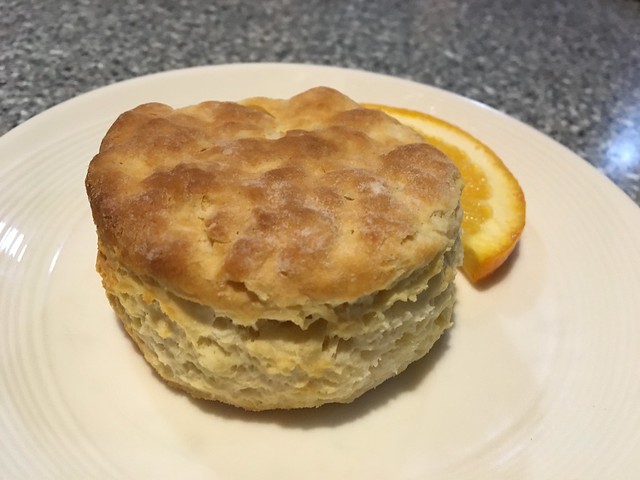 Vintage Restaurant opened in Elkins in 2014, but it wasn't on my radar until recently. It recently made its way to the 101 Most Unique Places to Dine in WV list, distributed by the WV Division of Tourism.
Vintage Restaurant opened in Elkins in 2014, but it wasn't on my radar until recently. It recently made its way to the 101 Most Unique Places to Dine in WV list, distributed by the WV Division of Tourism.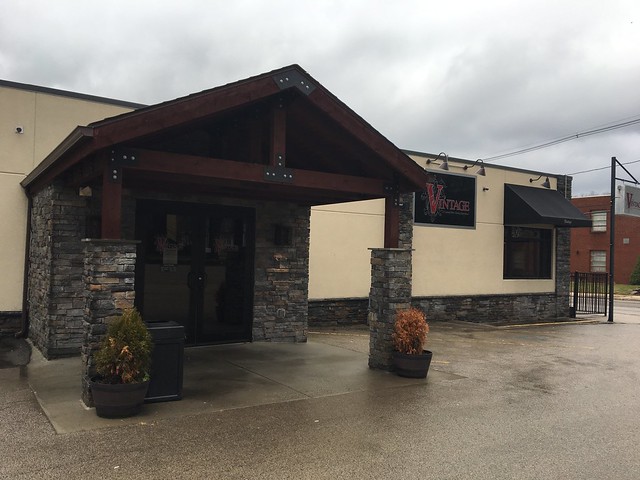 The restaurant frames itself as a "casual fine dining experience and wine bar." It features woodfired brick oven pizzas, fine wines and a classy atmosphere.
The restaurant frames itself as a "casual fine dining experience and wine bar." It features woodfired brick oven pizzas, fine wines and a classy atmosphere.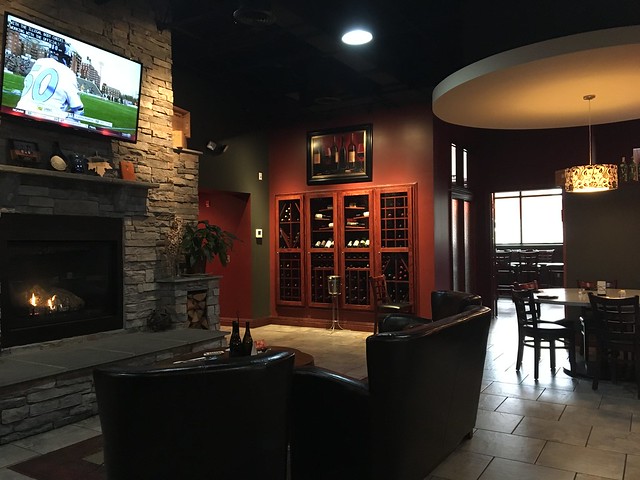 The building is large, dark and has this sort-of burgundy lace-like theme. I had to double-check that I was in the right place. Plenty of parking, though, which is always nice.
The building is large, dark and has this sort-of burgundy lace-like theme. I had to double-check that I was in the right place. Plenty of parking, though, which is always nice.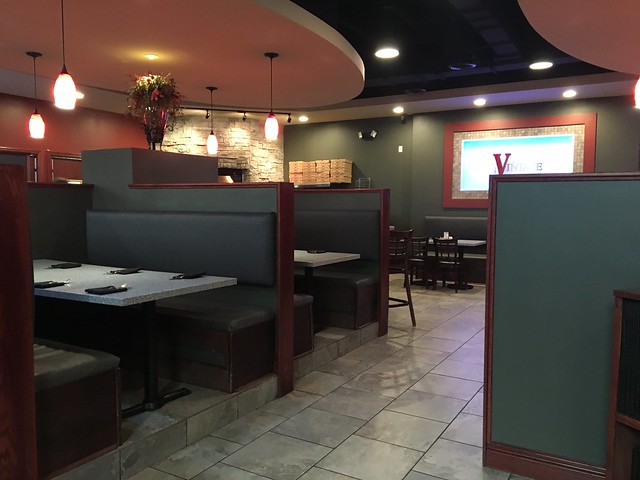 Inside, it's a lovely layout. A nice lounge area features leather couches and chairs, large booths are private, and the lighting fixtures extend down to each table so you don't get a glaring fluorescent light over the whole restaurant. There are some nice, upscale touches, and it does have this sort of taste of elegance.
Inside, it's a lovely layout. A nice lounge area features leather couches and chairs, large booths are private, and the lighting fixtures extend down to each table so you don't get a glaring fluorescent light over the whole restaurant. There are some nice, upscale touches, and it does have this sort of taste of elegance.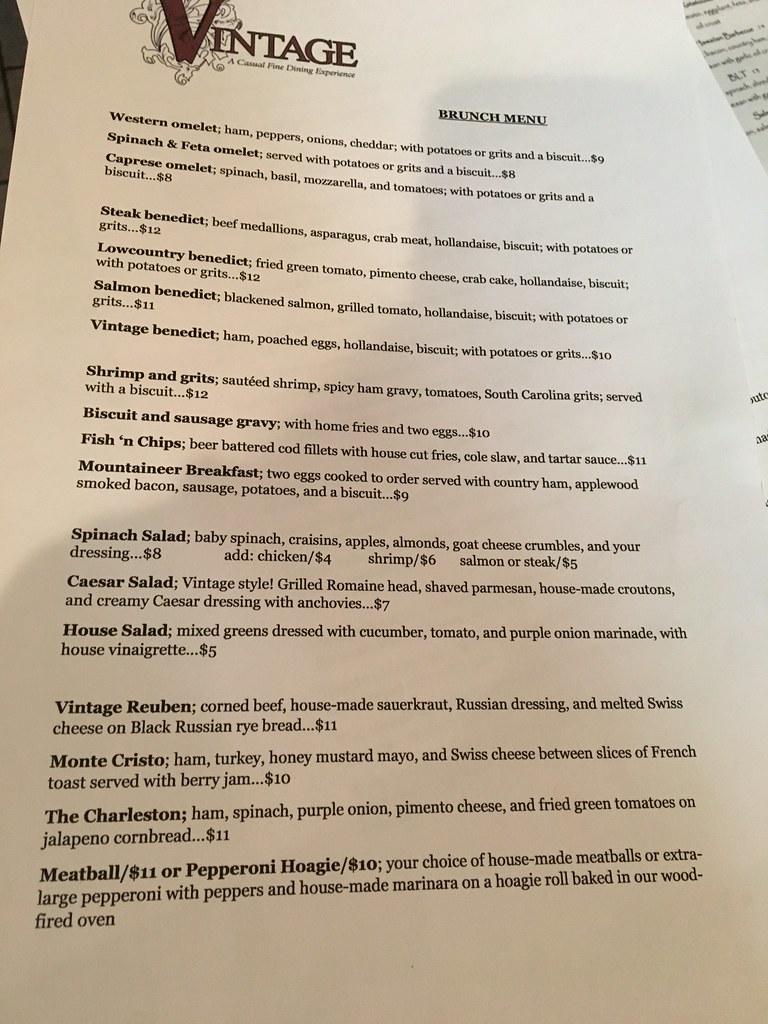 When I first walked in, there was no one around. No host, no greeter. I walked down the stairs. Still no one. I heard some servers off to the corner wrapping silverware, so I cleared my throat hoping they'd notice. After five minutes of fidgeting awkwardly, I walked around the corner and asked to be seated. That was awkward.
When I first walked in, there was no one around. No host, no greeter. I walked down the stairs. Still no one. I heard some servers off to the corner wrapping silverware, so I cleared my throat hoping they'd notice. After five minutes of fidgeting awkwardly, I walked around the corner and asked to be seated. That was awkward.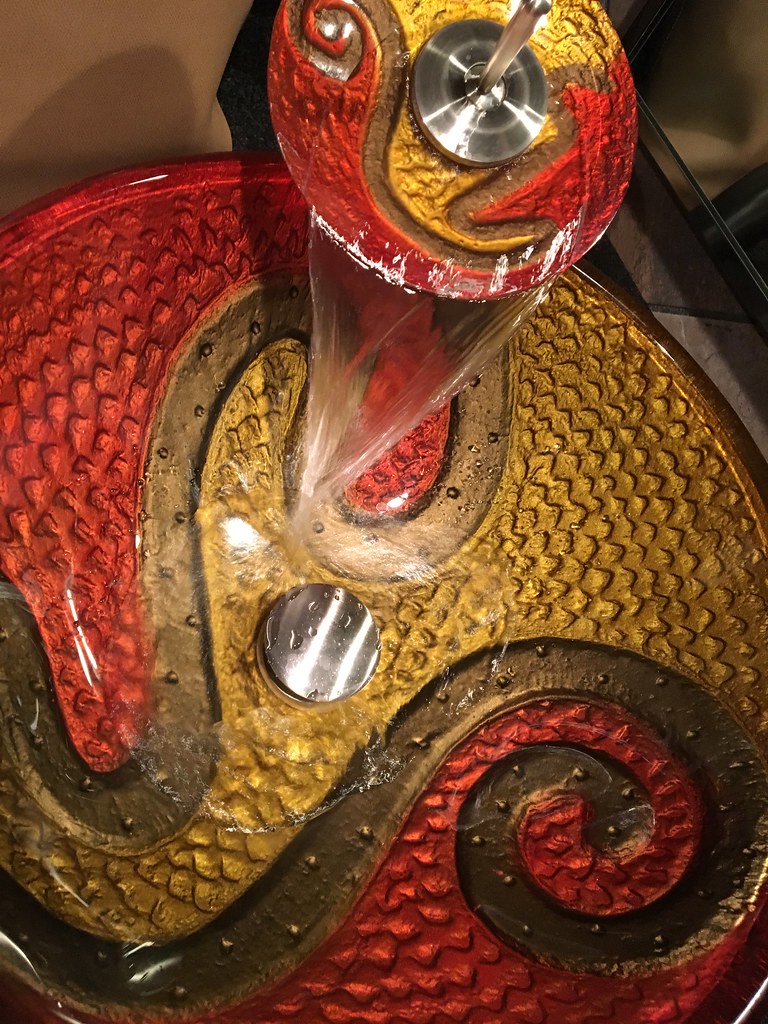 |
| Look how crazy this sink in the bathroom was! |
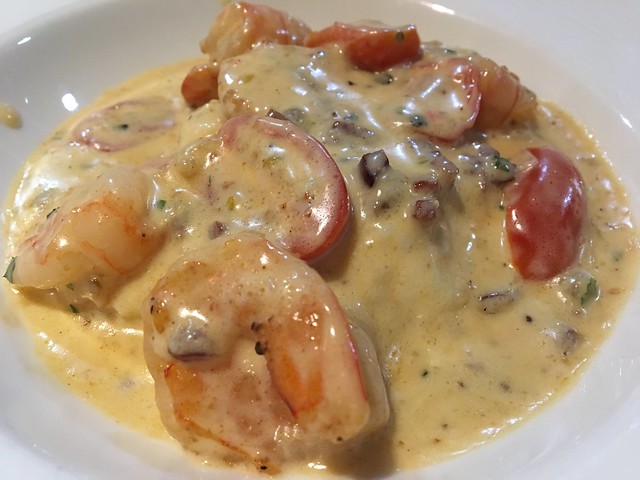 But, I can't resist shrimp and grits - sautéed shrimp, spicy ham gravy, tomatoes, South Carolina grits served with a biscuit. The portion came out as a fairly small serving. It had four regular-sized shrimp, with a few halves of cherry tomatoes. I liked the gravy - it had just a slight kick. Some chewier pieces of ham would have been welcome. The grits weren't much to write home about. But, the flavor of that gravy was pretty solid - creamy, rich. The biscuit was a little dry, a little tough. Overall, a decent dish. Not the best rendition of shrimp & grits I've had, but a worthy contender.
But, I can't resist shrimp and grits - sautéed shrimp, spicy ham gravy, tomatoes, South Carolina grits served with a biscuit. The portion came out as a fairly small serving. It had four regular-sized shrimp, with a few halves of cherry tomatoes. I liked the gravy - it had just a slight kick. Some chewier pieces of ham would have been welcome. The grits weren't much to write home about. But, the flavor of that gravy was pretty solid - creamy, rich. The biscuit was a little dry, a little tough. Overall, a decent dish. Not the best rendition of shrimp & grits I've had, but a worthy contender.Grade: B
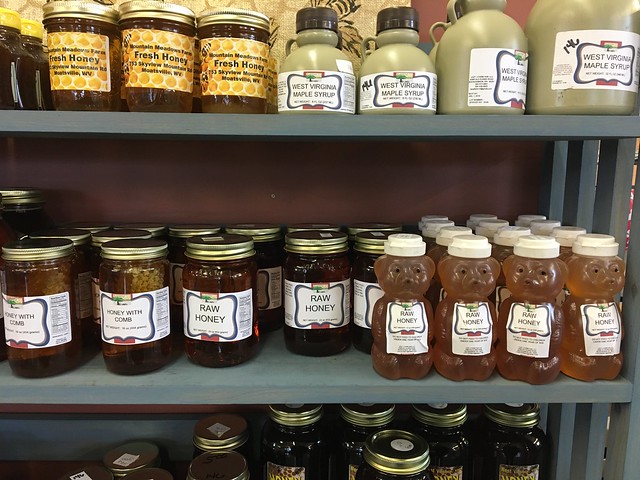 I'm slowly making my way through the locally owned grocery stores in West Virginia, as I have a dedication to these folks. I've been to Farmer's Daughter Market & Butcher, Front Street Grocers and Kitchen and more. And, while passing through Philippi, I stopped at the Community Garden Market Place from Heart and Hand House.
I'm slowly making my way through the locally owned grocery stores in West Virginia, as I have a dedication to these folks. I've been to Farmer's Daughter Market & Butcher, Front Street Grocers and Kitchen and more. And, while passing through Philippi, I stopped at the Community Garden Market Place from Heart and Hand House.The Community Garden Market a provides an opportunity for local gardeners and bakers to earn money by selling their fruits, vegetables, meats, eggs, baked goods, honey and other specialty items. The market promotes the health and well-being of the community, not only from a nutritional standpoint, but economically, as well as socially.
As a participant in the WV Farmer’s Market Nutrition Program (FMNP), the market is a place where senior citizens and WIC recipients may purchase produce with coupons designed to encourage better nutritional choices. The market also now accepts SNAP benefits (food stamps).
The Garden Market has grown steadily since it was started in 1992. A new facility built by volunteers from Christ United Methodist Church in 2003 improved the market dramatically and in 2013 the market moved to its current location, The Market Place at 107 South Main Street.
The Market sold more than $66,000 in produce, meat, eggs, baked goods, and plants during the 2015 season and had over 130 local participating producers.
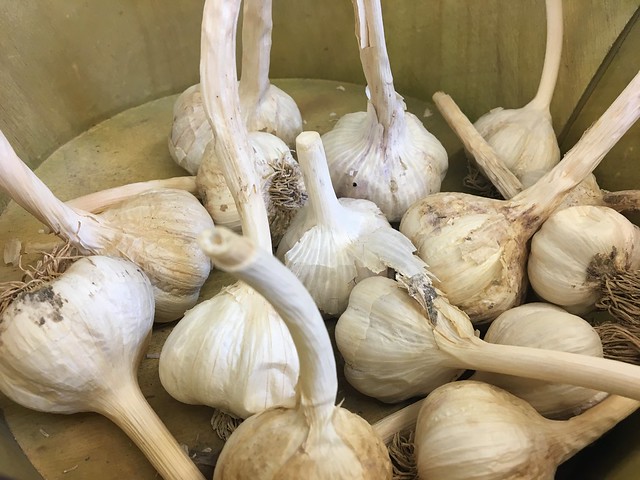 This market is a bit different since it is a nonprofit affiliated with the United Methodist Church. Local growers bring their items to the shop, and they are sold for them. How cool is that?
This market is a bit different since it is a nonprofit affiliated with the United Methodist Church. Local growers bring their items to the shop, and they are sold for them. How cool is that?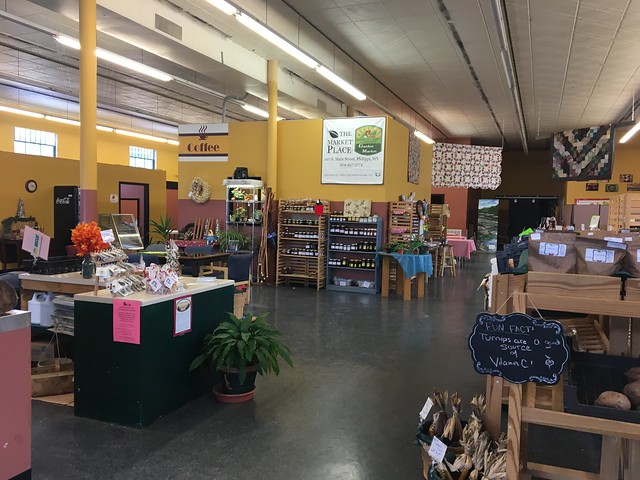 You can find a variety of fresh produce, meats, honeys, breads, and other artisan products.
You can find a variety of fresh produce, meats, honeys, breads, and other artisan products.
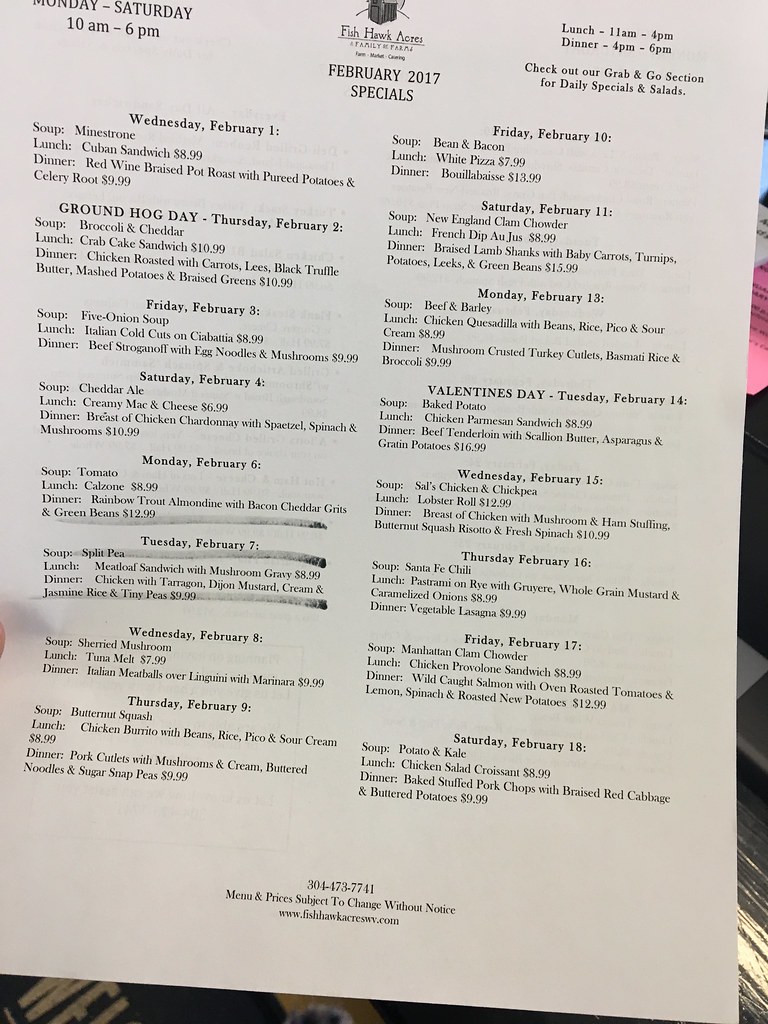 The market also has a small Fish Hawk Acres shop where you can grab a bite to eat with items like soups, sandwiches and dinner entrees.
The market also has a small Fish Hawk Acres shop where you can grab a bite to eat with items like soups, sandwiches and dinner entrees.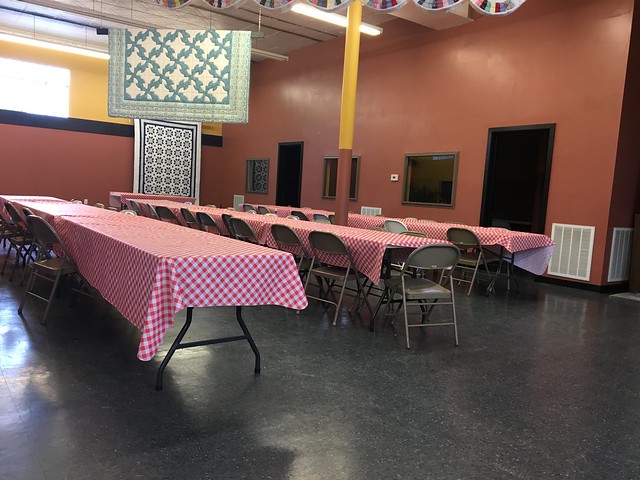 Beyond that, it is a gathering space. There are communal tables, and even more lounge areas for folks to meet or chat.
Beyond that, it is a gathering space. There are communal tables, and even more lounge areas for folks to meet or chat.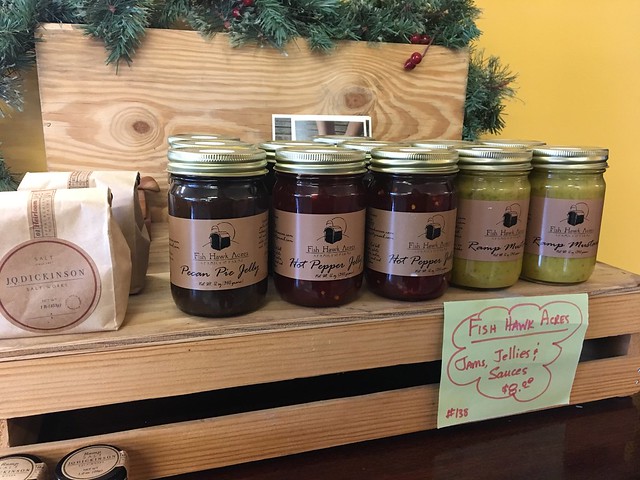 I got a small bag of chocolate covered toffee squares from a local baker, and I regret nothing. So tasty.
I got a small bag of chocolate covered toffee squares from a local baker, and I regret nothing. So tasty.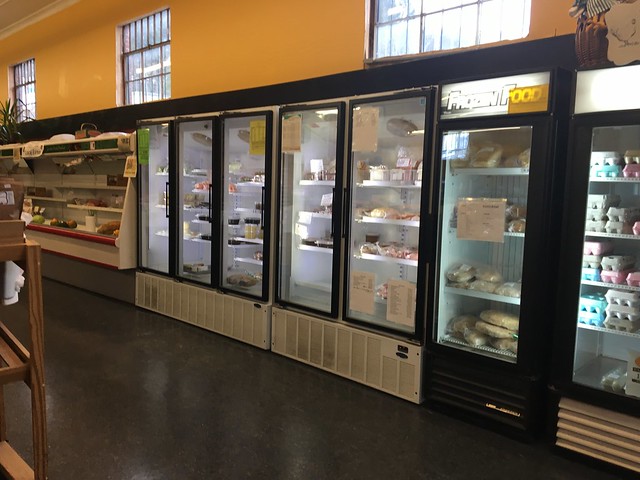 I think it's such a cool concept. I just wish I had been there a little earlier in the day so I had a chance to try some of the prepared food from Fish Hawk Acres.
I think it's such a cool concept. I just wish I had been there a little earlier in the day so I had a chance to try some of the prepared food from Fish Hawk Acres.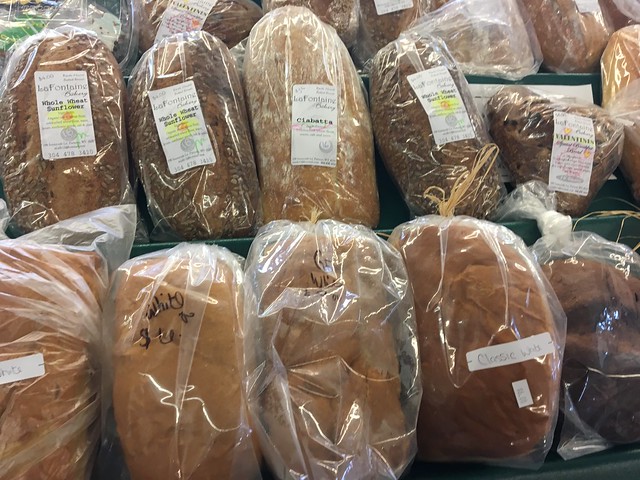 Have you been? What's your favorite thing to get?
Have you been? What's your favorite thing to get?
All work property of Candace Nelson. Powered by Blogger.

